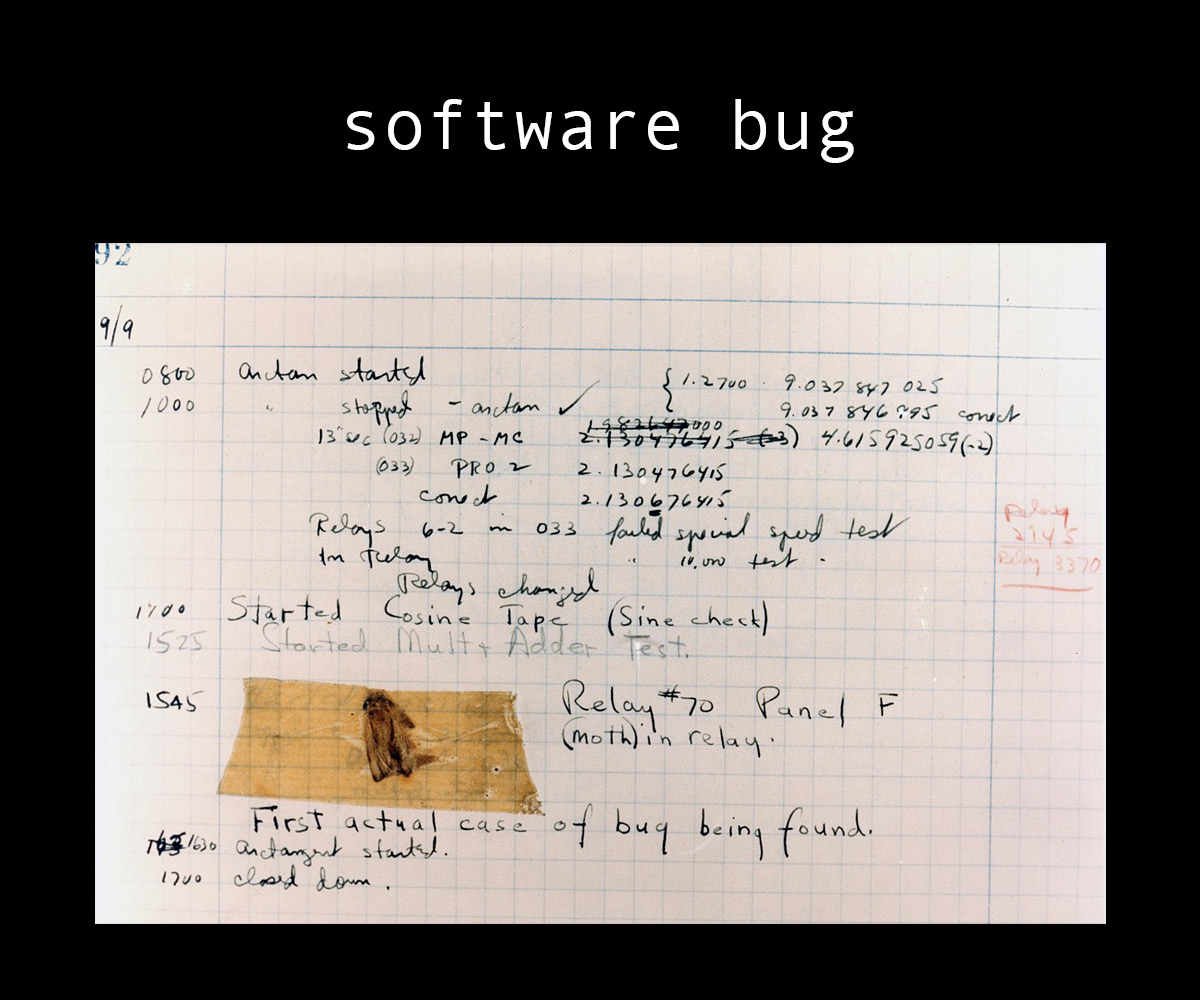Unveiling the Origins of the Term Bug
In the realm of software development, the term “bug” has become ubiquitous, representing an error that causes unexpected behavior in computer programs. However, few are aware of the fascinating story behind the origin of this term. We weren’t until our Friday team meeting when one of our co-workers gave a presentation about the origins. Surprisingly, it has its roots in a tiny insect that found itself entangled in the gears of early computing machinery. Let’s dive into the tale of the software bug, the moth that sparked its name, and the individuals involved in this historical discovery.
The Discovery of the First Software Bug
The year was 1947 when the world of computing was undergoing a transformative phase. Grace Hopper, a computer scientist and one of the pioneers of computer programming, was working on a Mark II computer at Harvard University. On the evening of September 9, Hopper and her team encountered an error in the system. The machine failed to execute instructions properly.
Investigation and the Moth
Determined to identify the source of the malfunction, Hopper and her team closely inspected the Mark II computer. As they explored the circuitry, they stumbled upon an unusual sight. Lodged between the electrical relays of the computer, they discovered a small, lifeless creature – a moth. This unsuspecting insect had found its way into the machine, causing a short circuit and disrupting the operation.
The Naming of the Software Bug
Realizing the significance of this, Hopper’s team carefully removed the moth from the computer and documented the event. The entry in the logbook of the Harvard Mark II reads, “First actual case of bug being found.” The team used the term “bug” figuratively, as it had already been in use to describe faults and defects in various fields, including engineering. However, this event solidified the association of the term “bug” with software defects.
Subsequent Development
Following the discovery, the term “bug” gained popularity in the computing community to describe defects in software or hardware. It became an integral part of the software development vernacular, providing a concise and easily understood term to communicate flaws and issues within computer systems.
BOOK A CALL WITH OUR TEAM
Beyond the Bug
Grace Hopper’s contributions to computer science extended far beyond the discovery of the first software bug. She played a pivotal role in the development of programming languages and compilers, including the creation of COBOL. Hopper’s tireless efforts and groundbreaking achievements earned her the title “Mother of COBOL” and solidified her place as one of the most influential figures in computer history.
The fascinating story behind the origin of the term “software bug” highlights the unexpected and serendipitous nature of scientific discoveries. Through the chance encounter with a moth in the Mark II computer, Grace Hopper and her team inadvertently coined a term that would forever shape the field of software development. The term bug serves as a reminder of the resilience and ingenuity required to navigate the complexities of computing, as well as the significant contributions made by pioneers like Grace Hopper in advancing the world of technology.
BOOK A CALL WITH OUR TEAM

